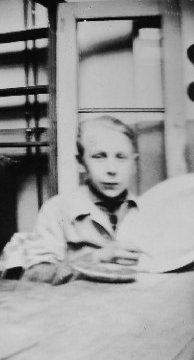
Verwoerd Ceramics Online
|
|
|
Cornelis Verwoerd, Dutch Ceramist, modeler, and Delft painter |
| Cornelis Verwoerd (10 Feb 1913 - 19 Dec 2000) is born in Rotterdam, Netherlands. At an early age his family moves to Gouda. After leaving primary school he starts working as an errand boy for a local porcelain and pottery store, and is frequently asked to collect orders from the well known Gouda Pottery and Delft factory "Plateelbakkerij Zuid Holland" (PZH). In May 1927, at the age of 14, he joins PZH as a painter's apprentice and remains there until December 1931 when most painters lose their jobs due the Great Depression. He then successively works for Pipemakers and Delft factory "Zenith" of Gouda (1934), and "Plateelbakkerij Schoonhoven" of Schoonhoven (1937). After having served in the ill-prepared Dutch army that proved to be no match for the German Blitz Krieg forces, he returns to Zenith Gouda (1940) where he gets an opportunity to become a skilled modeler, i.e. a specialist of making plaster models and moulds. When the German occupation of Holland ends, Verwoerd has mastered all main aspects of his profession. |  |
 |
The
Verwoerd Ceramics Studio (1949-1976) |
|
Miniature
Clay Pipes & Contemporary Jewelry |
 |